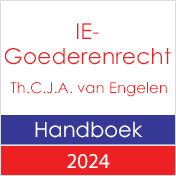
B9 10513. (Concept) Persbericht Raad van de Europese Unie over the creation of a unified patent litigation court.
Ministers continued the examination on the establishment of a unified patent litigation system in the context of the creation of unitary patent protection. A large majority of delegations supported the objective to reach agreement before end 2011. The essential elements of the compromise include:
1. The seats of the Central Division of the Court of 1st Instance, the Court of Appeal and the Patent Arbitration Centre: Several proposals have been made by member states interested in hosting the seats.
2. The financial contribution of the member states hosting a local division, a regional division, the Central Division or the Court of Appeal: The host member state would provide for the necessary facilities, equipment and, for the initial period, the management of the administrative staff.
3. Other financial contributions of the member states: While the objective should be that the Unified Patent Court becomes self financing over time, financial contributions will be required in the setting up phase based of a balanced and transparent formula.
4. Language of proceedings: While the principal should be maintained that the language of proceedings of a local division can be changed only with the agreement of both parties, a party could address a request to the President of the Court in order to change the language of proceedings for reasons of convenience and fairness.
5. Actions to be brought to the central division: The possibility to enhance the role of the central division and give parties the choice to bring actions from infringements concerning a number of member states before the central division instead of bringing them before a local or regional division. Under the compromise the parties would have the choice to bring an infringement action before the central division if the defendant is domiciled outside the EU.
6. Number of ratifications required for the entry into force: There is general consensus that the Unified Patent Court should enter into force once a minimum number of member states have ratified the Agreement.
7. Transitional period: A transitional period will be fixed for "classical" European patents without unitary effect during which actions can still be brought before the national court.
8. Revision clause: A range of provisions would have to be reviewed by the administrative committee in order to improve the functioning, efficiency and cost effectiveness of the Unified Patent Court and the quality of its judgements.
The debate follows discussions engaged at the ministerial meeting of 29 September 2011 (see press release 14691/11, page 9), on the basis of the draft agreement for creating a common patent court that would ensure compliance with the EU treaties. Previously, on 30 May 2011, a large majority of member states endorsed the setting up of a unified patent court by means of an agreement to be concluded between the member states outside the EU institutional framework.
During the last weeks, EU preparatory bodies have carried out intensive work on the other parts that configure the package: two draft regulations implementing enhanced cooperation in the area of unitary patent protection (see press release 11831/11). Following negotiations with the European Parliament, a provisional agreement has been achieved between the Council and the Parliament, which includes additional provisions for the benefit of the small and medium-sized enterprises (SMEs) in the future use of unitary patent protection.
The European Parliament is expected to vote on the two draft regulations for the creation of unitary patent protection and the applicable translation arrangements early in 2012.
Lees het gehele persbericht hier.



























































